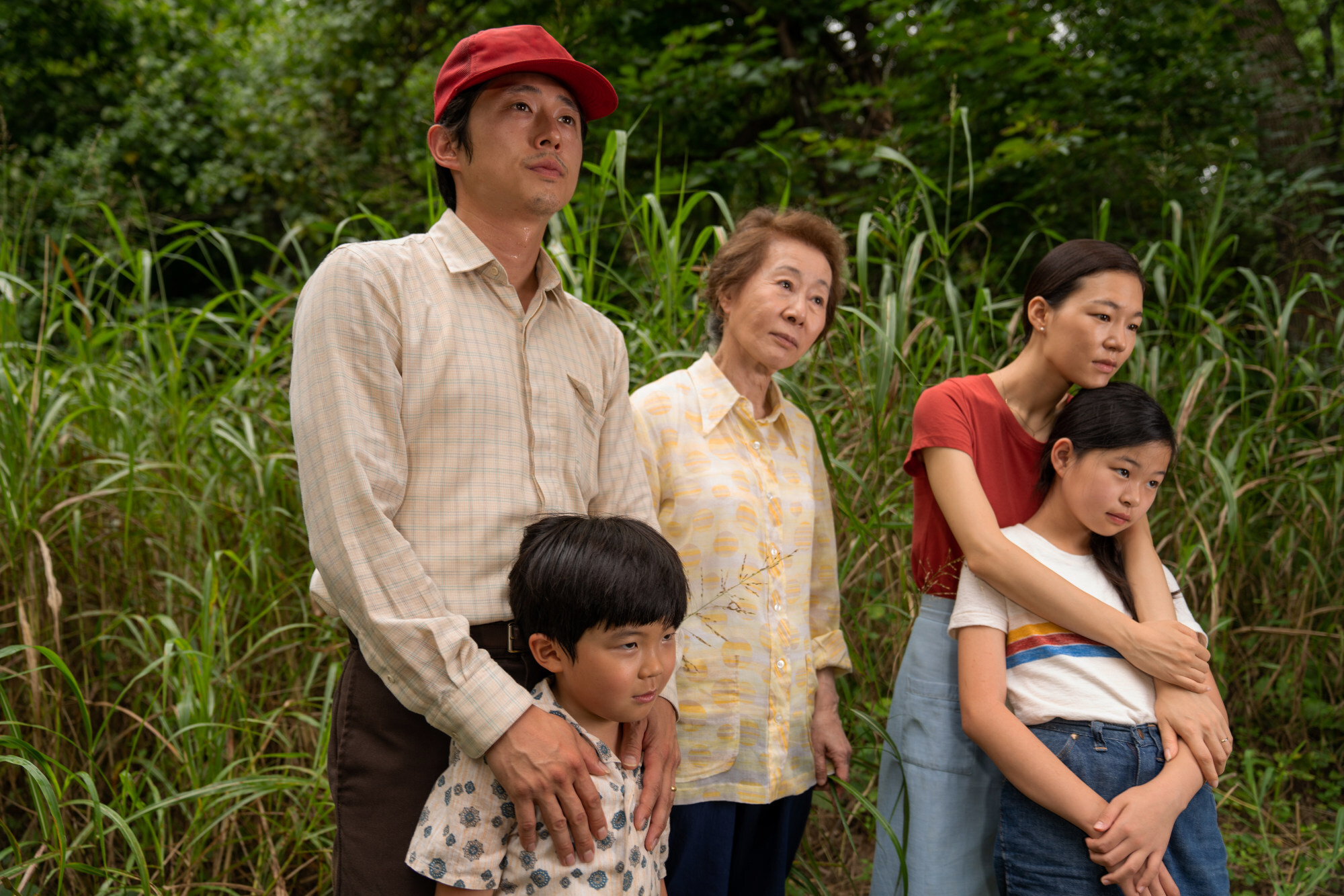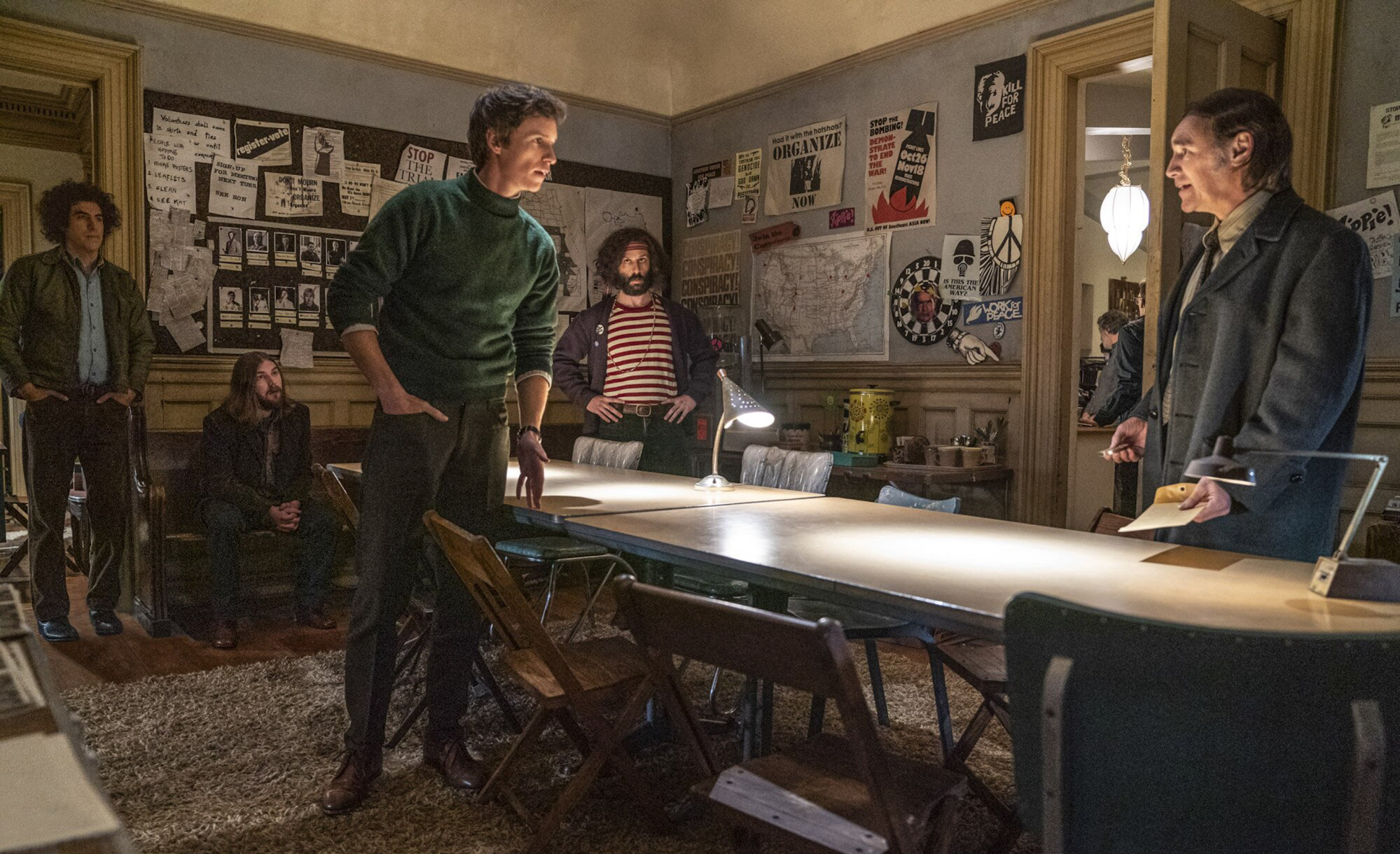
From Nomadland to Minari, an America in transition shown in the architecture of Oscars best picture nominees
- All eight films nominated for best picture Oscar have an unsettled feeling, in their narrative and the architecture of the buildings we see
- From the motor home in Sound of Metal to the parents’ house in Promising Young Woman, a sense of insecurity pervades
The first time you see Jacob and Monica’s new home in Minari, it’s from the vantage point of a moving car. Images of bucolic landscape hugging a country lane give way to an open field. In the middle of that isolated field sits the couple’s future residence.
The camera settles on a putty-coloured mobile home. Its lack of skirt siding reveals how it was towed into place. “Look, wheels!” the kids exclaim as Monica, their mother, portrayed by Han ye-ri, looks on in horror.
Inside, she sees frayed wallpaper and wood panelling, with drop ceilings covered in industrial acoustic tile. It is less a home than a basic shelter.
A heavy storm reveals many leaks as a television newsreader warns of possible tornadoes. Already vulnerable, the family is now dangerously exposed.
In a time turned upside down by Covid-19, it seems appropriate that the eight pictures nominated for this year’s Academy Awards all channel a feeling of the unsettled – in their narratives, but also in the architecture they depict.

In these films, the aspirational, single family dwelling of the mid-20th century seems but a hazy dream. Instead, characters carve out their existence in the spaces in-between: vans, trailers, guest rooms and the ramshackle houses shared by activists fighting for a common cause.
In Lee Isaac Chung’s Minari, a tale of Korean immigrants trying to make a new life for themselves in rural Arkansas, that space is a 1970s-era mobile home.
Diverse Oscars: Hollywood has more work to do in stopping Asian hate
No movie articulates the theme of dislocation quite like Nomadland, the winner of this year’s best picture Oscar.
To make ends meet, Fern hits the road as a 21st century migrant labourer, working at an Amazon warehouse, harvesting beets and cleaning campsite bathrooms.
The van that takes her from site to site is her home – one she baptises “Vanguard”. Like any home, Fern customises it. Her husband’s old tackle box holds a set of dishes her father once gave her and a Santa light illuminates her as she sleeps.
Sound of Metal also features itinerant protagonists whose lives are entirely contained within the frame of a vehicle – in this case, an idiosyncratic Airstream motor home.

Ruben and Lou – played by Riz Ahmed and Olivia Cooke – are rock musicians whose entire domestic world fits neatly between the white lines of a parking space. Like Fern’s van, their RV is fully customised, complete with sound recording equipment.
Like Fern, Ruben and Lou have a fragile existence. A precipitous case of hearing loss and the demons of addiction sideline Ruben from drumming, the art that gives him his purpose.
As he struggles to reclaim some semblance of his former life, he begins to strip down the trailer he has lovingly built, selling its various components in search of a cure for his faltering hearing and his emotional losses.
Aaron Sorkin’s The Trial of the Chicago 7 and Shaka King’s Judas and the Black Messiah take place primarily in the public and civic realms, including streets, parks, assembly rooms and courts.
Activists share tumbledown houses, and a single piece of architecture can serve multiple functions: a town house is as much a house as an activist centre; a storefront with peeling paint does double duty as a school.

Henry Mankiewicz, the cantankerous, heavy-drinking screenwriter, played by Gary Oldman, at the heart of David Fincher’s Mank, is shuttled off by to a ranch in the high desert to work on Citizen Kane.
But Mank, in many ways, is a prisoner of the adobe farmhouse on the ranch. He is not only the victim of a car accident that has left him with a broken leg, he is the victim of his own worst tendencies.
At a time he should be enjoying great professional success, he has nothing except his pithy observations.
Sell Your Haunted House: exorcism-themed K-drama comedy
The same could be said of Cassandra Thomas, the vigilante heroine (played by Carey Mulligan) at the heart of Emerald Fennell’s Promising Young Woman, another character who seems adrift in a foreign space.
She lives with her parents in a single family home that is a mausoleum of styles both cloying and out of date: ’70s-era textured glass cabinets and shiny Louis XIV couches mingle with pink carpet and Lladró figurines. It is a space that Cassandra inhabits, but her arenas are the raucous hookup spots where she seeks predatory men.

Architecture – particularly the architecture of the home – can provide a character with an anchor. But in Florian Zeller’s The Father, architecture is used to destabilise.
Anthony Hopkins won the best actor Oscar for his portrayal of an 80-year-old man whose memory is beginning to falter. Is the well-to-do London flat he inhabits his? Or does it belong to his daughter and her dyspeptic partner? Or is it the memory care facility where he has been interned?
The action takes place over a series of sets, all which evoke each other in layout and in form: a warren of rooms clustered around a hallway that becomes scrambled in the protagonist’s mind.
For fleeting moments, Hopkins’ character seems to inhabit spaces he controls; but in so many others, that control slips from his grasp.
In our pandemic year, when we have been collectively estranged from the familiar, it’s a resonant view. We think we build on firm ground, but our foundations are shakier than we assumed.



